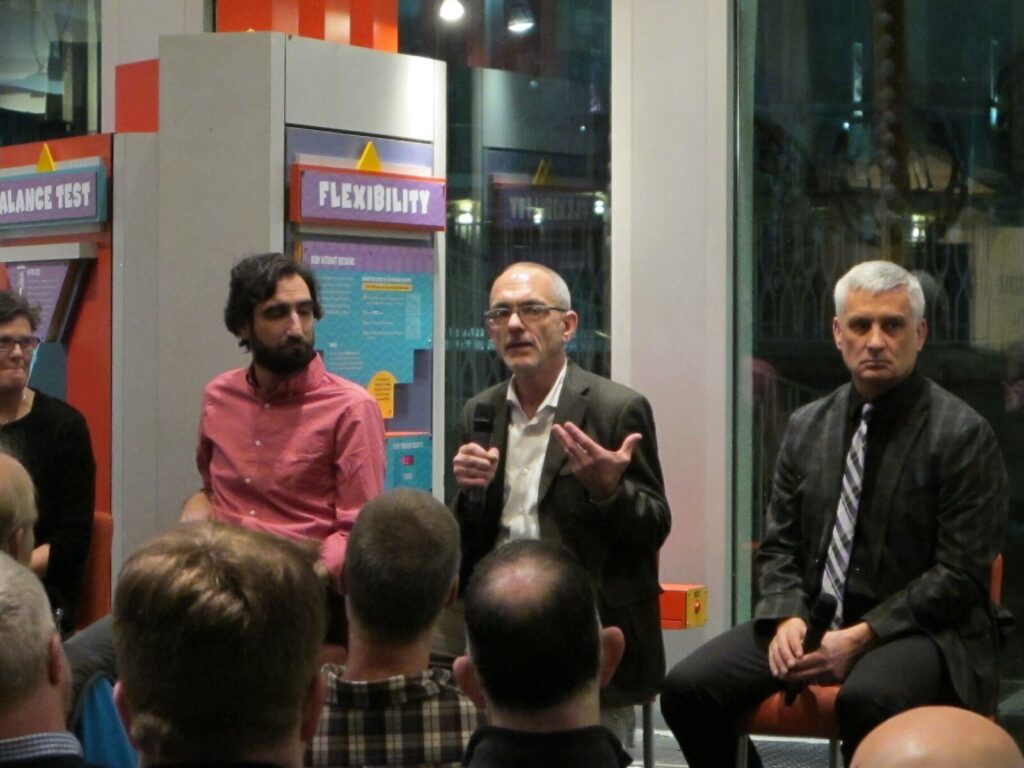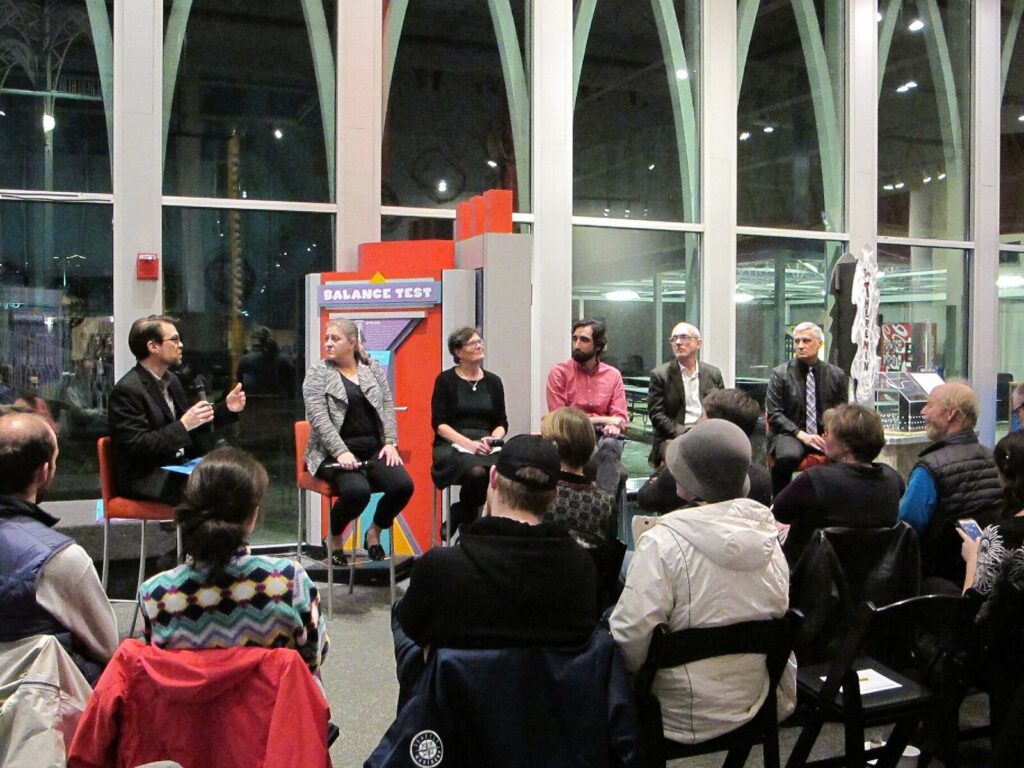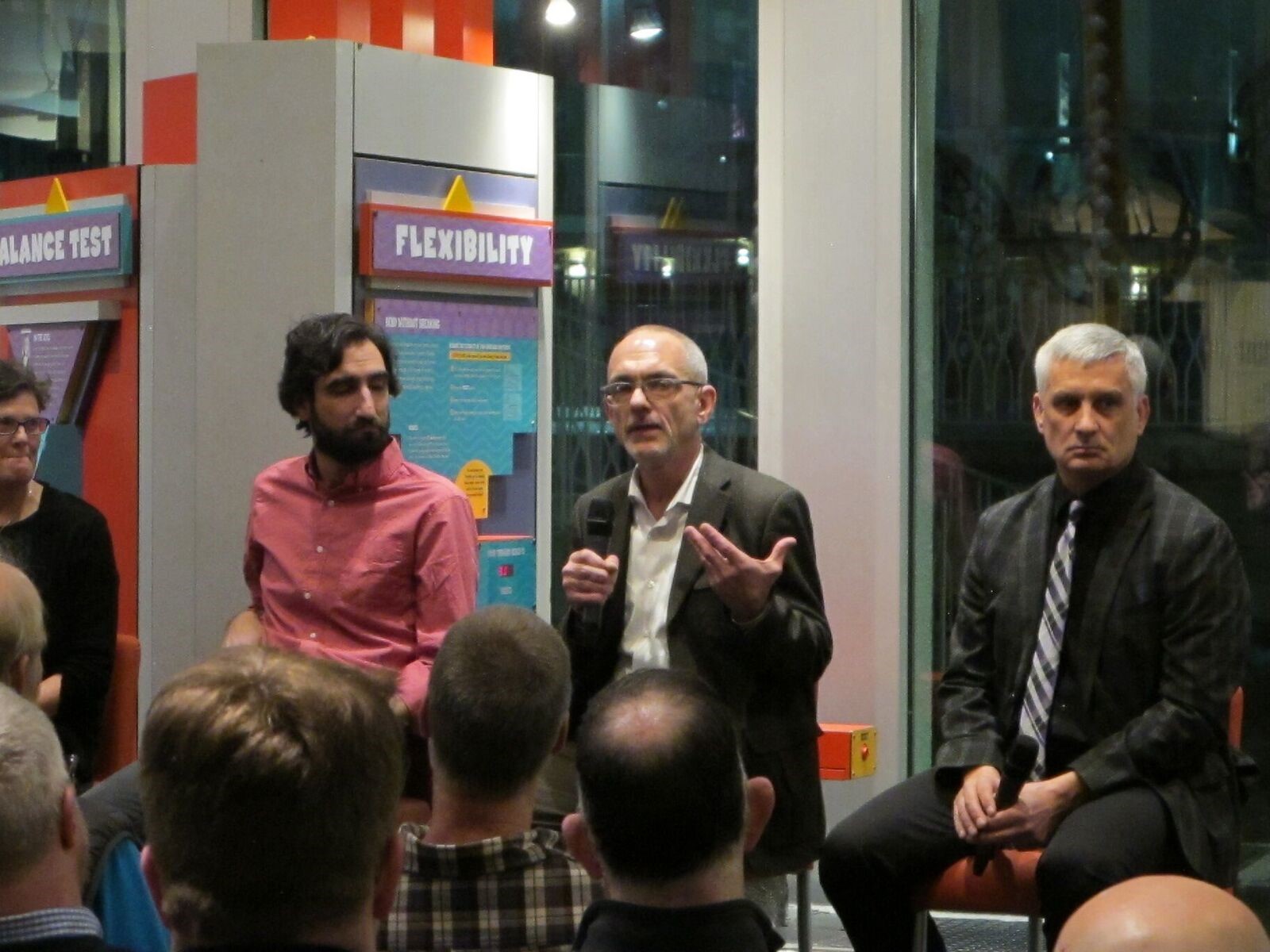
Background: The Alaskan Way Viaduct (SR99) is the “double-decker” freeway that runs along the Seattle Waterfront. This month it is being shut down permanently. Experts say the structure would not survive the big earthquake that the Seattle area is due for. Therefore it is being torn down and replaced by an underground tunnel. With Seattle traffic already hectic, this shut down has been a major topic in the news and has many Seattleites worried about their commute.
On a rainy night exactly two days and three hours prior to the permanent closure of the Alaskan Way Viaduct, the Pacific Science Center hosted a panel of transportation geeks to talk about the future of transportation in Seattle. The timing was great, as Seattleites grew anxious about the impending doom to their commute thanks to the extensive news coverage on the closure.
I was honored to be part of a panel that also included:
- Heather Marx—Seattle DOT spokesperson for the Viaduct closure (she’s been on TV a lot lately!)
- Mike Lindblom—Seattle Times transportation beat reporter for many years
- Alejandro Chouza—General Manager for Uber in Seattle
- Carol Cooper—King County Metro involved in the transit service changes
- Joshua McNichols—KUOW Reporter who facilitated the conversation

There were about 50 people in attendance, and everyone seemed to enjoy the conversation.
The conversation opened with Heather discussing the City of Seattle’s transportation command center that will be monitored 24/7 for the period before the new SR-99 Viaduct replacement tunnel opens in early February. Staff at the transportation center will work 12-hour shifts. They’ll have full access to all cameras and will be able to change signal timing patterns at downtown intersections on the fly to respond to incidents or unusually bad congestion.
One strong warning from Heather with the City of Seattle was to not park in any no parking zones. These lanes are being kept clear of cars for emergency vehicle and transit use only. Any vehicles parked in these lanes will be towed within minutes!
Carol with King County Metro talked about some of the recent changes for buses downtown including expansion of the bus restrictions on 3rd avenue to most hours of the day. (This was a Parametrix project led by Alex Atchison and Steve Olling). The City was recently granted permission to do camera ticketing for vehicles in the red bus-only lanes, so avoid those lanes.
I discussed the future of transit in the city and region, and how the City of Seattle’s proposed congestion pricing plan would be good for the region if revenues were used to fund improvements for transit, bicycles, and pedestrians. I also discussed ways that data is being used to reduce vehicle collisions, with a goal to eliminate all collisions.
Alejandro, the General Manager for Uber in Seattle, talked about Uber’s partnerships with Seattle, Metro, and other cities in the region, and some of the new services that they’re piloting, including Uberpool.
Mike Lindblom with the Seattle Times had comments about the history of the tunnel decision and some of the ‘hot spots’ that the Seattle Department of Transportation needs to pay attention to during the closure. He mentioned the area near the south tunnel portal near the stadiums and the 6th/Battery area. Mike has been following the tunnel closure issue closely, and made some critical comments, but also had a few compliments for Metro and SDOT.
After the event, I offered to give a fellow attendee a ride home, giving me the excuse to drive on the Alaskan Way Viaduct for my very last time.

